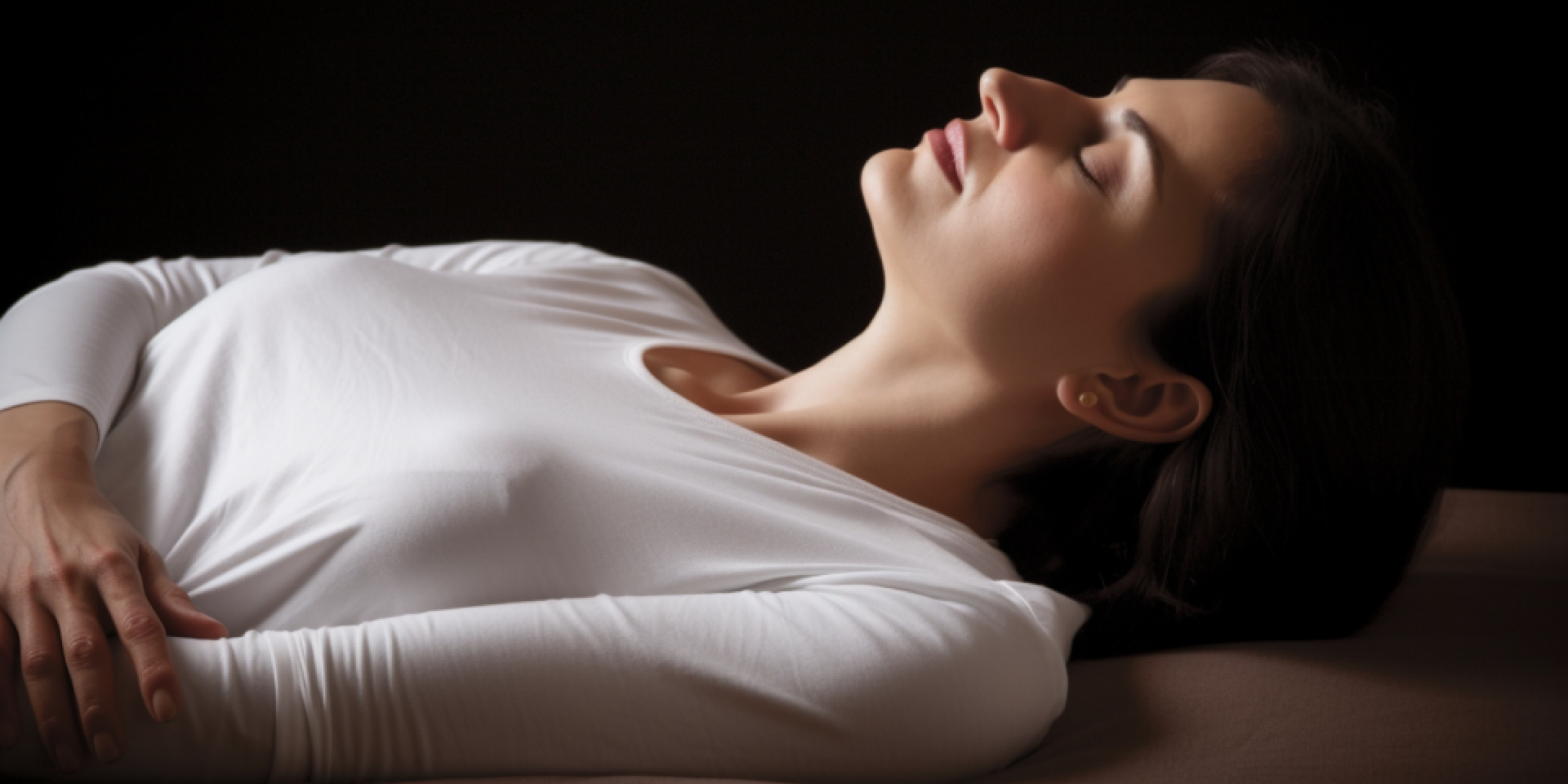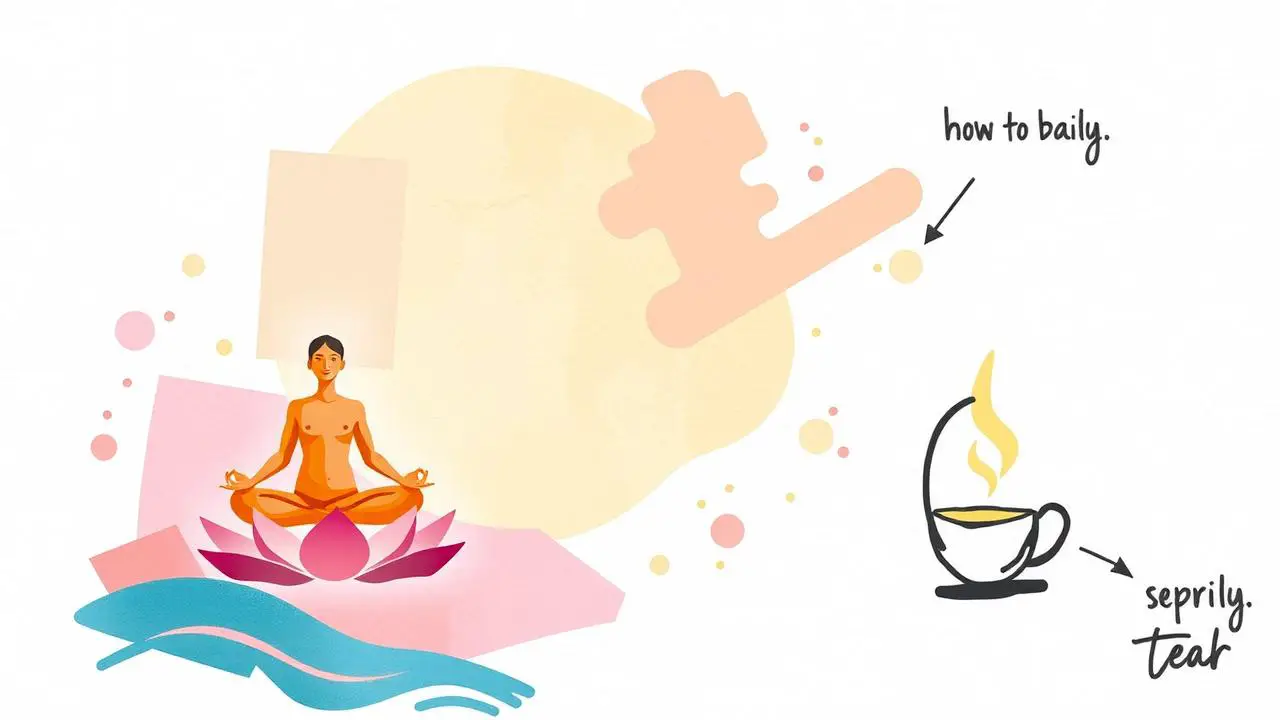Hello! I’m here to talk about the benefits of mindful breathing and how to get started. But first, why is mindful breathing important?
Mindful breathing is important as it helps to reduce stress and anxiety levels, increases focus and concentration, and can help to improve overall mental and physical health. It promotes relaxation and helps to regulate the nervous system, which can lead to better sleep and a feeling of calmness. It is also a simple and easy practice that can be done anywhere at any time.
Mindful breathing is a simple yet powerful tool that can help you to achieve greater peace, joy, and clarity in your life. It’s an ancient practice that helps you to become more aware of yourself and your environment, while also teaching you how to manage stress and anxiety.
With regular practice, mindful breathing can help you cultivate a deeper understanding of yourself and your relationship with the world around you. Mindful breathing is an incredibly accessible practice that can easily be incorporated into any lifestyle or routine.
Whether you’re a beginner or experienced practitioner, I’m here to explain the basics of mindful breathing and provide guidance on how to get started. By the end of this article, you’ll have all the knowledge and confidence necessary to incorporate mindful breathing into your daily life.
So let’s dive right in!
What Is Mindful Breathing?
Are you looking to have a healthier mind and body without having to do anything? Believe it or not, that’s actually possible! With mindful breathing, you can benefit from improved mental health without lifting a finger.
Let me explain.
Mindful breathing is a practice of focusing on your breath in order to relax both your mind and body. It’s an ancient technique with roots in Eastern spirituality, but nowadays it’s becoming more widely used as a tool for improving mental health.
By dedicating time each day to paying attention to one’s breath, mindfulness practitioners are able to gain clarity, calmness, and peace of mind. What makes mindful breathing so effective is that it requires no special equipment or training – just the desire to take some time out of your day to focus on yourself.
With mindful breathing techniques, you can get started right away on the path towards better mental health – no strings attached!
Benefits Of Mindful Breathing
I’m a huge believer in the power of mindful breathing. It can help reduce stress and increase awareness, leading to improved physical and mental health.
When we practice mindful breathing, we’re taking conscious control of our breath, allowing us to slow down and relax. This can help us to be more aware of our thoughts and emotions, and to respond more calmly to stressful situations.
Regular mindful breathing can help us to reduce anxiety and depression, and can even help us to become more resilient. With practice, it can become an invaluable tool for taking care of our mind and body.
So why not give it a try?
Reduced Stress
Mindful breathing has proven to be an effective way of reducing stress and anxiety, something that many of us can relate to in our busy lives. By taking the time to focus on your breath and become aware of how your body feels, you can minimise the effects of stress and help regulate your emotions.
Mindful breathing allows you to take a step back from all the noise and chaos that often surrounds us and instead connect with yourself on a deeper level. The practice of mindful breathing helps to reduce anxiety by forcing you to focus on one thing: your breath. This helps to bring a sense of calmness, reducing any physical tension and allowing thoughts and feelings to pass without judgement or reaction.
With consistent practice, it can help create emotional resilience as you learn to recognize feelings without attaching too much importance or getting overwhelmed by them. By connecting with ourselves through mindful breathing we are able to cultivate inner peace, allowing us the freedom space from everyday stressors and enjoy moments in life that may have otherwise been missed.
When practiced regularly, it is possible for mindful breathing techniques to lead to lasting changes in both our mental and physical wellbeing!
Increased Awareness
Mindful breathing not only helps to reduce stress and anxiety, but it can also help to increase awareness. Through mindful breathing we become more aware of our body’s responses and feelings that come up as we go through life. This increased awareness allows us to better recognize physical tension in our bodies before it becomes overwhelming and make decisions about how to best cope with it.
By becoming more aware of ourselves, we can then start to develop a sense of inner peace and balance, allowing us to live a more mindful life. When done regularly, mindful breathing techniques can help to cultivate body awareness which can lead us to an understanding of how our emotions affect our physical health. By recognizing this connection between the mind and body, we are able to notice when our thoughts are out of balance and take steps towards creating more harmony between them.
This increased awareness can help us be more conscious of how we interact with the world around us, allowing us to be more present in each moment. Through mindful breathing, we can create an environment where we are better able to understand our own emotions and learn how they fit into the bigger picture. By taking a few moments each day for mindful breathing, we can gain insight into ourselves on a deeper level and find balance in the chaos that often surrounds us.
Improved Health
Mindful breathing not only helps to reduce stress and anxiety, but it can also have a positive impact on our overall health.
By taking a few moments each day to practice mindful breathing, we can increase our awareness of the body, allowing us to recognize physical tension before it takes over.
This awareness can lead to improved concentration and focus which can help reduce stress and improve overall health.
Mindful breathing also helps us to cultivate an understanding of how our emotions affect our physical health, enabling us to take steps towards creating more harmony between them.
As we become better able to recognize when our thoughts are out of balance, we will be able to make healthier decisions in both the short and long term.
Not only that, but mindful breathing helps bring about a sense of inner peace that can lead to improved mental clarity and emotional well-being.
Through mindful breathing, we can create an environment where we feel more connected with ourselves and those around us, resulting in improved relationships with others.
In summary, mindful breathing is an incredibly powerful tool for stress relief and improved health that should be practiced regularly for best results.
Understanding The Mind-Body Connection
Connecting with our breath is a powerful tool. It can help us to relax and increase our awareness of the body-mind connection. When we focus on the breath, it helps us to access a different kind of wisdom, one that often gets overlooked in our daily lives.
Exploring this connection through mindful breathing can help us to gain insight into ourselves and increase our physical and emotional wellbeing. To get started with mindful breathing, there are several techniques you can use:
- Meditation techniques:
- Visualization
- Guided meditation
- Focused attention
- Relaxation methods:
- Progressive muscle relaxation
- Autogenic training
- Breathing exercises
- Mindfulness practices:
- Sitting meditation
- Walking meditation
- Body scan practice
With these tools, you can start to explore the inner landscape and experience the profound effects of connecting with your breath.
As you learn more about mindful breathing, you’ll find new ways to access your body-mind connection and enjoy its many benefits. Now let’s explore the basics of mindful breathing.
The Basics Of Mindful Breathing
Mindful breathing is one of the most effective ways to practice mindfulness, manage stress, and reduce anxiety. It’s a simple technique that anyone can do, no matter where they are or how much time they have.
To get started with mindful breathing, start by finding a comfortable spot to sit or lie down. Close your eyes and take a few deep breaths while paying attention to the sensations of your body – the rise and fall of your chest and abdomen as you breathe in and out. As thoughts arise in your mind, simply acknowledge them without judgment before returning your focus back to your breath.
As you become more familiar with mindful breathing, try to extend each breath for a few seconds longer than usual. Feel free to experiment with different speeds and rhythms, such as inhaling for three counts and exhaling for four counts. You could also try adding visualizations or mantras into your practice.
For example, if you’re feeling stressed out or anxious, visualize each breath as an opportunity to let go of those feelings. With consistent practice over time, you will be able to better recognize patterns of stress and create healthier habits for managing it on a daily basis.
Mindful breathing can be done anywhere at any time – in the morning after waking up or right before bed; during work breaks; even while stuck in traffic! Getting in touch with our breath helps us stay grounded amidst chaos and regain balance when life feels out of control.
By taking just a few minutes each day to focus on the present moment through mindful breathing, we can build a foundation for greater emotional regulation and overall wellbeing.
Finding The Right Environment
When you start your mindful breathing practice, it’s important to create a space for yourself that is calming and peaceful. This can be a corner of your bedroom or even outside in your garden.
Taking some time to organize and make your mindful breathing space comfortable can help create a calming atmosphere for your practice.
As you go through your day, pay attention to what triggers stress or anxiety in you. This way, you can be more aware of it and take steps to address it through mindful breathing.
Understanding what your triggers are can help you become more mindful of your reactions and make it easier to practice mindful breathing.
Creating A Calm Space
Creating the right environment for mindful breathing is key to cultivating relaxation and managing stress. To achieve this, we need to create a calm space: a place where we can let go of the pressures of life, and simply be present in our own company.
Firstly, this means finding an area that feels safe and comfortable – ideally somewhere with natural light and minimal noise. This could be anywhere from your bedroom to your backyard or even a quiet park.
Secondly, make sure the environment is free from distractions. Turn off all electronic devices and remove any clutter that may cause you to become distracted.
Finally, add some elements of nature if you can: open the windows, light some candles or bring in plants or flowers – anything that will help to create a soothing atmosphere that helps you relax and focus on your breath.
Identifying Triggers
Now that we have explored the importance of creating a calming environment for mindful breathing, let’s delve into learning how to identify triggers that could be causing increased stress and tension.
It’s essential to become aware of causes, so that you can take control of your reactions and practice mindful breathing to help you cope with whatever life throws at you.
Recognising patterns in your behaviour is an important step in understanding what might be triggering negative feelings or behaviours.
Start by noting down any thoughts or sensations that arise when something is stressful or overwhelming.
You may even find it helpful to keep a journal, as this will help you remember certain triggers and allow you to track your progress as you incorporate mindful breathing into your daily life.
By being aware of what causes us stress and anxiety, we can begin the journey of learning how to control our reactions and create healthy responses instead.
Learning to recognise our emotional triggers is an empowering step towards finding balance and inner peace – something that mindful breathing can help us achieve.
Developing Your Mindful Breathing Practice
Now that you have found the right environment for your mindful breathing practice, it’s time to develop that practice. Mindful breathing is a powerful tool to bring calm and stress relief into your life. It is a simple process, but one that requires dedication and regular practice.
Here are four tips to help you get started:
- Start small and be consistent: Begin by dedicating just 5 minutes each day to your mindful breathing practice. Doing this on a regular basis will slowly build up your skills and make it easier for you to incorporate mindful breathing into your daily life.
- Focus on the breath: When practicing mindful breathing, focus entirely on the sensations of inhaling and exhaling. Allow yourself to observe these sensations without judgement or expectation – simply notice them as they arise and pass away.
- Be open to any feelings or emotions that come up: Mindful breathing can bring up strong emotions and feelings, so allow yourself to feel whatever comes up without getting attached to it. Acknowledge any thoughts or feelings that may arise during your practice, then let them go as you continue focusing on the breath.
- Practice regularly: Consistent practice is key when cultivating a mindful breathing habit! Make sure you set aside time for yourself every day – even if it’s just 10 minutes – so that you can dive deep into a state of relaxation and stress relief. With consistent practice, you’ll soon begin to reap the calming effects of mindful breathing in all areas of life!
Dealing With Challenges
Hello everyone! As a mindful breathing expert, I’m here to talk about the benefits of mindful breathing and how you can get started.
Identifying stressors is an important step in dealing with challenges. When you can recognize the source of your stress, you can develop coping skills tailored to you.
Once you have a few strategies in place, it’s time to reframe your thinking. Instead of feeling helpless, see the challenge as an opportunity for growth.
Mindful breathing can be a great tool to help you shift your perspective and find the strength to tackle any obstacle. Let’s get started and see how it works for you!
Identifying Stressors
Hey there! I’m here today to talk about identifying stressors and how to deal with challenges. As a mindful breathing expert, I know that learning how to manage stress is essential for your wellbeing. Stress management can be as simple as taking a few deep breaths and using relaxation techniques like mindfulness and visualization.
First off, it’s important to recognize what’s causing you stress in the first place so you can begin to work on coping strategies. Identifying your stressors can be done by keeping a journal of all the things that make you feel overwhelmed or anxious.
Once you’ve written down the sources of your stress, take time to reflect on them and figure out what triggers them. This will help you develop a plan for better managing your responses in stressful situations.
Finally, it’s also important to create an action plan for reducing or eliminating the sources of your stressor. This could include making lifestyle changes like getting enough sleep, exercising regularly, and eating healthy foods. It could also involve developing coping mechanisms like relaxation techniques such as deep breathing exercises or meditation that help you stay calm in stressful circumstances.
Whatever works best for you is key!
Developing Coping Skills
Once you’ve identified your stressors, the next step is to develop coping strategies that work for you.
Coping skills are techniques or activities that help you manage and reduce stress in the moment. These can include anything from deep breathing and visualization to physical activities like yoga or walking. It’s all about finding what works best for you.
Mindfulness is another helpful way to cope with stress. This practice involves being present in the moment and focusing on your breath without judgement or resistance. It helps to bring awareness to your thoughts and how they affect your emotions. This allows you to regulate your reactions and be more mindful of how you respond under pressure.
Overall, having a plan of action for when things get stressful is essential for maintaining balance in life. Taking time out of each day to focus on yourself, reducing stress triggers, and developing coping skills can make all the difference in managing challenges and staying healthy mentally, physically, and emotionally.
Reframing Thinking
When dealing with challenges, it’s important to remember that reframing your thoughts can be a powerful tool in managing stress. By changing the way you think about the situation and finding the positive aspects, you can gain emotional regulation and start to take control of your reactions. Reframing your thinking helps you to shift your perspective so that you can find solutions rather than get overwhelmed by stress. It also allows you to recognize that things may not always turn out as expected, but there is still something good in every situation.
Mindful breathing is an effective way to reframe our thinking during stressful moments. Focusing on your breath helps bring awareness to how our thoughts are affecting our emotions and encourages us to regulate our reactions in difficult situations.
By taking deep breaths and recognizing when we are getting overwhelmed, we can take a step back from the situation and focus on what’s most important—our wellbeing.
By reframing our thinking and practicing mindful breathing, we can begin to manage stress more effectively and take control of our emotions. This helps us feel better equipped when facing tough challenges and gives us the confidence to recognize that whatever life throws at us, we will be able to handle it with resilience.
Making Mindful Breathing Part Of Your Life
Mindful breathing can be a powerful tool for promoting overall wellbeing. While it may seem like a simple practice, the calming effects of mindful breathing are truly remarkable. When done properly, this technique can help you to achieve greater mental clarity and reduce stress levels. To get the most out of your mindful breathing sessions, it’s important to make them part of your daily life.
| Benefits | How-To |
|---|---|
| Calming Effects | Take time each day to focus solely on your breath |
| Mental Clarity | Incorporate deep breaths into everyday activities |
| Reduced Stress Levels | Set an intention during each session and keep it in mind throughout the practice |
Integrating mindful breathing into your daily routine will allow you to reap the maximum benefits from this practice. First, commit to taking time each day just for yourself — even if it’s only 5 minutes — to focus solely on your breath and how it feels as it enters and leaves your body. You can also incorporate deep breaths into everyday activities like waiting in line or washing dishes as needed. Additionally, try setting an intention during each session and keep that thought in mind throughout the practice. Doing so will help you to stay focused and will allow you to more effectively benefit from this technique over time.
By making mindful breathing part of your life, you’ll be able to experience its true power first-hand — whether that be improved mental clarity or decreased stress levels — which is why it’s worth investing the effort in developing this habit. With some dedication and consistency, mindful breathing can become an invaluable part of your self-care routine and lead to greater overall wellbeing in both body and mind.
Frequently Asked Questions
How Often Should I Practice Mindful Breathing?
When it comes to mindful breathing, how often you practice is totally up to you. It’s important to find what works best for your body and mind.
Generally, a few minutes each day can create a positive mind-body connection and help cultivate self-awareness. Start by setting aside just five minutes a day for mindful breathing and slowly add more time as you become more comfortable with the process.
And don’t forget to listen to your body—if it’s feeling overwhelmed or tired from too much practice, then take a break and come back to it when you’re ready.
What Should I Do If I Find Myself Struggling To Focus On My Breathing?
If you find yourself struggling to focus on your breathing while practicing mindful breathing, don’t worry – it happens to us all!
You can use relaxation techniques and meditation techniques to help you get back on track. Try counting your breath as you inhale and exhale, or repeating a mantra in your head.
You could also try focusing on the sensation of air passing through your nostrils. Remember – practice makes perfect! With some patience and dedication, anyone can learn how to practice mindful breathing effectively.
Are There Any Physical Health Benefits Associated With Mindful Breathing?
Absolutely! Mindful breathing has many physical health benefits.
It can help reduce stress, improve blood pressure, and promote relaxation.
Regular mindful breathing can also help relax tense muscles, increase energy levels, and create a sense of calmness that can last throughout the day.
Additionally, it can increase mental clarity by creating an atmosphere of stillness and focus.
Mindful breathing is an effective tool for calming the mind and body and can be used to deal with challenging emotions or situations in life.
Does Mindful Breathing Work For People With Anxiety Or Depression?
Mindful breathing can be a powerful tool for anyone struggling with anxiety or depression.
Just think of how it feels to take a deep breath and feel your body relax.
It’s an incredible feeling, and it can help you manage the difficult emotions that accompany mental health issues.
Mindful breathing works by using relaxation techniques to help you become aware of your thoughts and feelings without judgement.
By focusing on your breath, you can learn to observe your mental state without getting caught up in negative thinking patterns.
As you practice mindful breathing, you will start to notice a decrease in anxiety and depression symptoms, allowing for greater emotional balance and clarity.
Are There Any Particular Breathing Techniques That Are More Effective Than Others?
When it comes to mindful breathing techniques, there’s no one-size-fits-all answer.
Different methods are better suited to different situations and people.
For instance, mindfulness meditation is often used to help individuals relax and focus on the present moment.
It can be a great way to manage anxiety or stress.
On the other hand, guided visualizations are a more detailed practice that can help you access deeper truths about yourself.
They’re especially helpful for those dealing with depression or difficult life transitions.
Ultimately, whichever technique works best for you is the one that you should use!
Conclusion
Mindful breathing is a powerful tool that we can use to improve our mental and physical health. It’s easy to get started, and the more you practice, the easier it will become.
The benefits are simply astonishing! From reducing stress levels to increasing focus and energy, mindful breathing can transform your life in ways you never imagined.
It doesn’t matter if you’ve been struggling with anxiety or depression for years; mindful breathing can help everyone.
I’m absolutely convinced that if you give mindful breathing a try, it will make such an incredible difference in your life – so much so that it’ll feel like magic!




